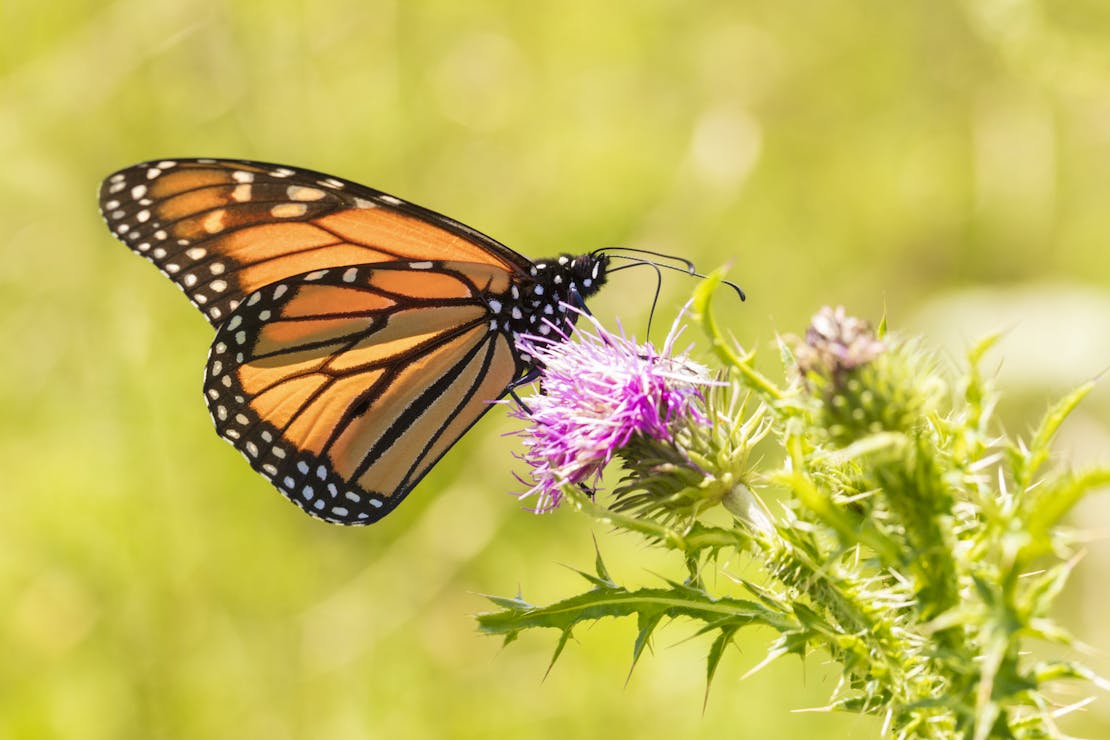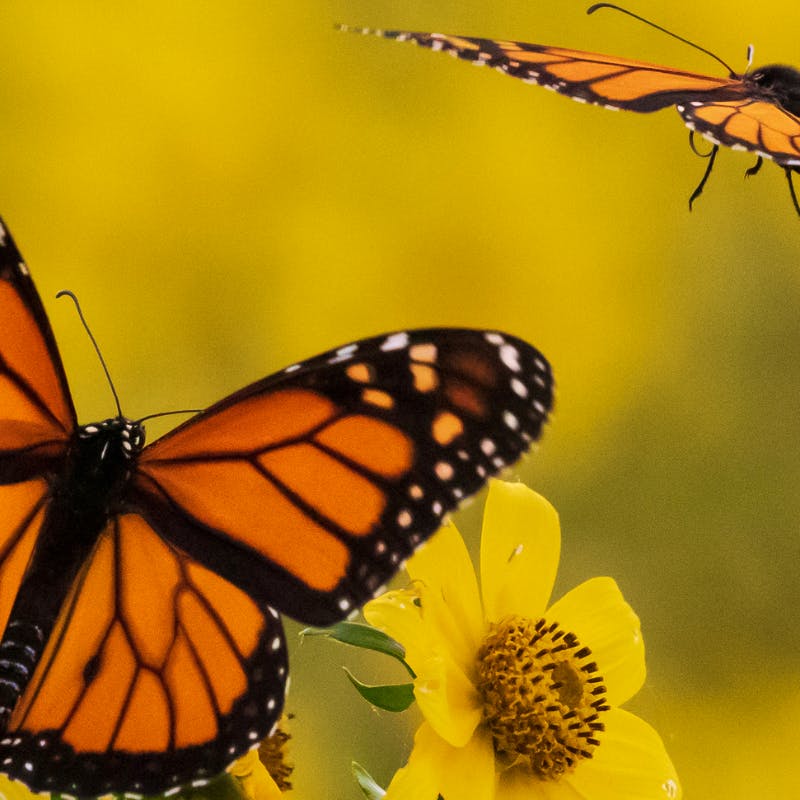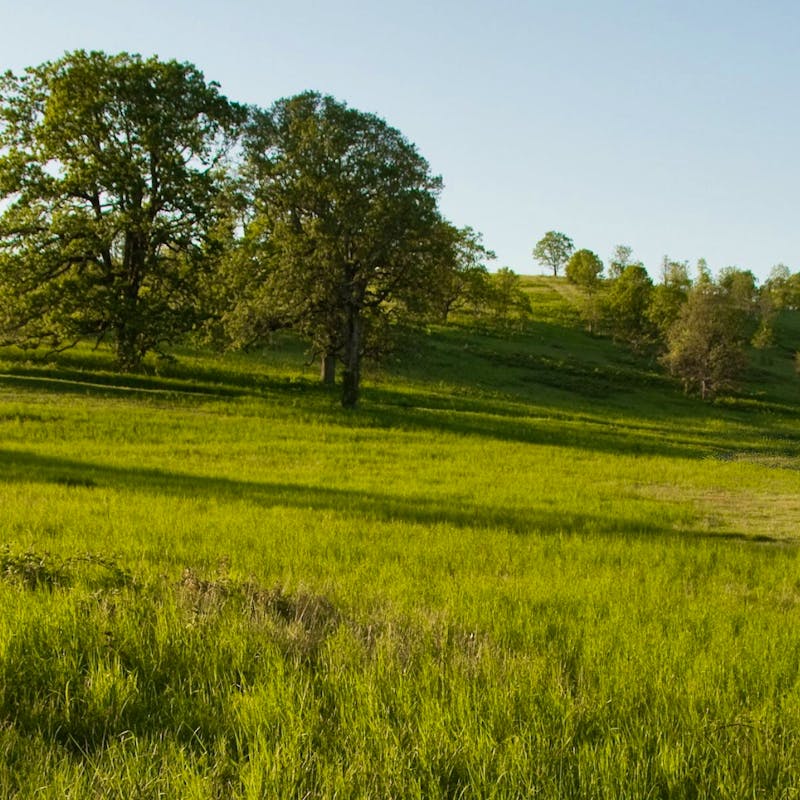Join our mobile Rapid Response Network!
You can be the first to hear about how we’re going to hold this administration accountable and how you can fight back for wildlife!
Monarch butterflies (Danaus plexippus) sport distinct, striking orange wings with black margins and white dots.
These eye-catching colors warn potential predators that monarchs are poisonous and to stay away.
Like many butterfly species, monarchs only live for a short time. Most generations live only a few weeks, though overwintering adults can live six to nine months. Their impressive, thousands-mile-migration between the edge of Canada and Mexico is carried out by generations of monarchs.
Butterflies are important pollinators for our ecosystems. Other imperiled butterfly species include the Karner blue (Lycaeides melissa samuelis), Quino checkerspot (Euphydryas editha quino), Saint Francis' satyr (Neonympha mitchellii francisci) and Oregon silverspot (Speyeria zerene hippolyta).
Why are monarchs and many other butterflies imperiled?
Each species of butterfly is reliant on specific plants or plant groups as hosts for their eggs and caterpillars. For many, their relationship with host plants is being disrupted as the world warms: the plants may move northward and butterflies can’t find them; the butterflies may have to make longer, perilous migrations; and intensifying storms may blow butterflies off course.
Monarch butterflies rely on milkweed for food, shelter, cover for their eggs and for their toxicity that protects them from predators. Milkweed, however, has been dramatically reduced by herbicides and land cover change over the past few decades. The loss of milkweed sites across the country has in turn led to the disappearance of billions of monarchs, leaving this butterfly at the brink of extinction.
Monarchs and other butterfly species are also directly threatened by pesticide exposure. Even though they are not the target, pesticides do harm butterflies and overuse of these chemicals destroys critical habitats.
Human development is further threatening migratory and non-migratory butterflies by fragmenting migration pathways and destroying habitats. High walls can also block migrations because species like the Quino checkerspot only fly 6 to 8 feet off the ground.
The greatest threats to butterflies are habitat change and loss due to residential, commercial and agricultural development. Climate change, widespread pesticide use, and invasive species are also threatening many species of butterflies, because of both direct impacts and indirect impacts on native host plants.
Monarchs are proposed for listing as threatened.
Oregon silverspot
The Quino checkerspot, Saint Francis' satyr and Karner blue butterflies are all listed as endangered.
The monarch’s migration is a threatened phenomenon, while the migratory monarch itself has been designated as vulnerable.

Defenders' Impact
Defenders works continually to ensure Congress takes actions to maintain conservation funding for programs — such as the Farm Bill — that benefit landowners and wildlife like butterflies, while preserving environmental protections.
Defenders fights for proper consultation with the U.S. Fish and Wildlife and National Marine Fisheries Services to ensure activities like pesticide application or development won’t further jeopardize imperiled species.
What You Can Do
Create healthy butterfly habitat in your backyard, at your school or business or even on your porch or balcony by planting and supporting native flowering plants (including milkweed). Native plants have powerful benefits to many species that evolved alongside them. When you plant a variety you can invite a greater variety of birds, pollinators and other animals to your yard!
You can additionally help butterflies by eliminating your use of pesticides.

About
The monarch is widely distributed across North America. They can be found from Central America northwards to southern Canada, and from the Atlantic to the Pacific coasts.
The Karner blue butterfly today is only found in portions of New Hampshire, New York, Michigan, Wisconsin and Ohio. Historically these isolated populations were a continuous, connected band.
The Quino checkerspot butterfly is found in a few counties in southern California and northern Mexico.
Populations of Saint Francis’ satyr are only known to exist on Department of Defense lands at Ft. Bragg, North Carolina.
The Oregon silverspot once thrived in coastal habitat in Oregon, Northern California and Washington. Today it is only found at only four locations in Oregon.
Specific population numbers are generally unknown. Due to shrinking habitat and other threats, however, populations are known to be threatened and declining.
Some species migrate to avoid adverse conditions. Most migrate relatively short distances, but monarchs migrate over 3,000 miles. Monarchs can produce four generations in one summer. The first three generations will have life spans from two to six weeks and each will continue the northward migration. The fourth generation can live up to nine months and will migrate south to either Mexico or southern California for winter.
Camouflage and chemical defense, where the butterfly has evolved to have toxic chemicals in its body, help defend butterflies from predators. While camouflaged species often look like bark or leaves, toxic butterflies are often brightly colored which predators associate with poison.
From egg to adult, butterflies undergo a series of physical transformations known as metamorphosis. After mating, female butterflies lay eggs on a caterpillar food or “host” plant. The eggs can hatch within a few days, or within months or even years, depending on the temperature, humidity and light.
Caterpillars shed their skin several times as they grow. Once they are fully grown, they form a chrysalis or pupa using a silk thread they secrete. Days, months or even years later, depending on the species, a fully developed winged adult emerges from the chrysalis and the cycle begins anew.
Butterflies rely on nectar from flowering plants. Caterpillars of each species have their own preferences: monarch eat milkweed, Karner blue eat wild blue lupine, Quino checkerspot eat dwarf plantain, St. Francis’ satyr eat sedges and Oregon silverspot eat early blue violet.
Featured
A Moment for the Monarch Butterfly
Read on to learn about the monarch butterfly life cycle, monarch butterfly migration and how long monarchs live.
Publications
Read More About Butterflies
News










